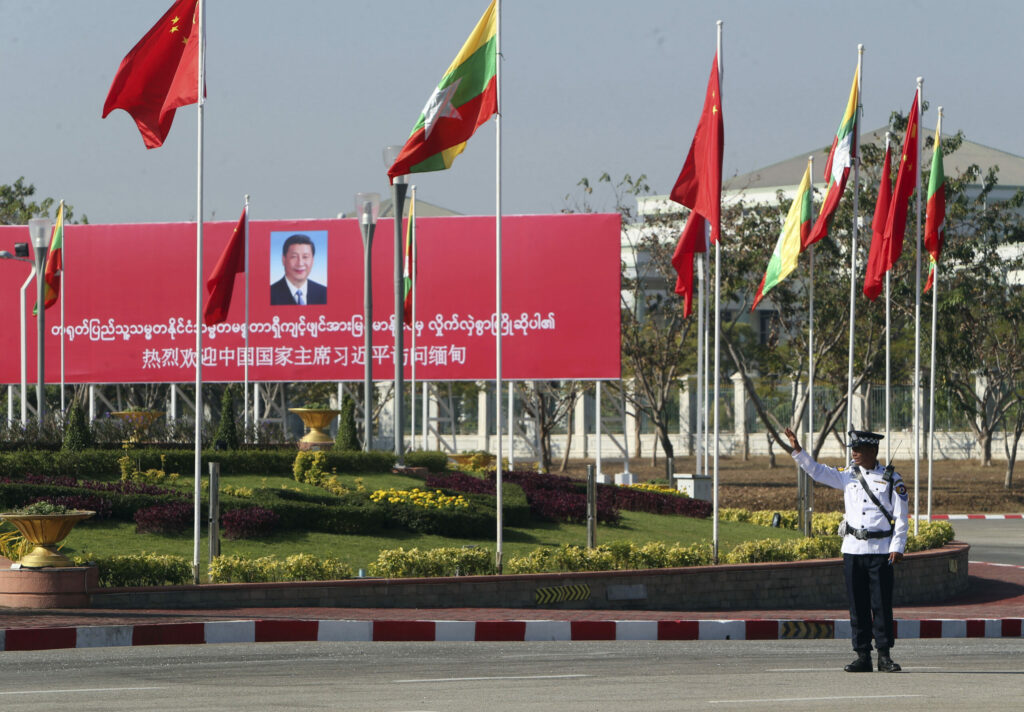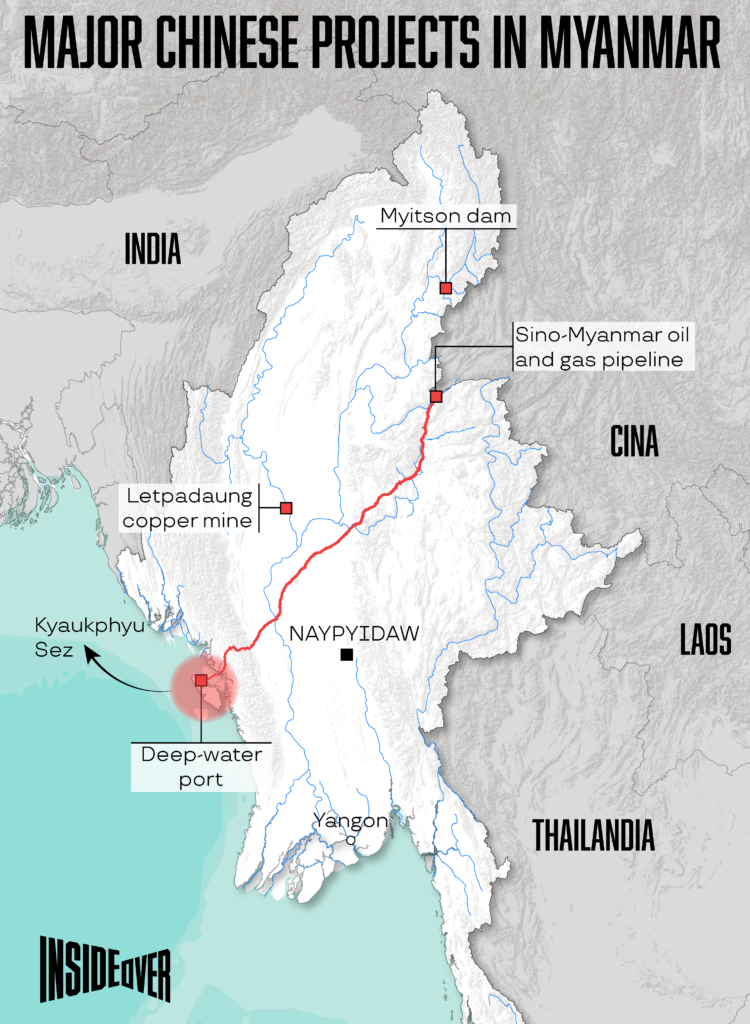How Beijing approaches the Myanmar maze is conditioned by four variables: natural gas; water; the drug trade; and the fractious clashes between the Tatmadaw and a dizzying patchwork of over 135 ethnic minorities.
Each Myanmar ethnic group exhibits its own peculiar history, culture and language. They control vast territories, whole industries and serious militias. Myanmar’s two-third majority is represented by the Bamar – also known as the Lowland Burmese. The Tatmadaw is largely a Lowland Burmese army – in perennial conflict with that large ethnic jigsaw puzzle.
The ethnic minorities live mostly in the hills and along Myanmar’s porous jungle borders. Myanmar is divided into seven states – named after the seven largest ethnic groups: Kachin, Chin, Karenni, Karen, Mon, Shan and Rakhine. Alliances tend to be quite fragile, but historically the Chinese have been inclined to support a few of them in their fight against the Tatmadaw.
Drug trade in Myanmar is a virtually impenetrable matryoshka – with most of these groups connected across the Golden Triangle to partners in China, Thailand and Laos, and on top of it competing against each other.
The Shan traditionally have used huge profits in the drug trade to buy an array of weapons. There is a wealth of competing Shan groups, among them the army of the late, notoriously flamboyant drug lord Khun Sa, known as “The Opium King of Burma”; the former headhunters that compose the Wa tribe; and a bunch of Kokang Chinese who form the eastern Shan State army.
The opium/heroin business – and much of the ya ba (amphetamine) trafficking – in the Golden Triangle is now largely controlled by the much feared United Wa State Army: a 20,000-strong ultra-hardcore militia, one of the most powerful on the planet, complete with their private collection of surface-to-air missiles.
And that brings us to the Chinese angle – because many of these ethnic potentates, from Khun Sa to Kyi Myint, a.k.a. Zhang Zhiming, a former head of the Communist Party of Burma, have forged very close relations with Chinese Triads.
Yet what does the central government in Myanmar have to do with the heart of the action in the Golden Triangle? Not much. The Tatmadaw may strike the odd peace deal with these unruly actors, but they usually don’t last long.
What the Tatmadaw did over these past decades was a crash course on business – learning the ropes about post-Mao China. That’s how they evolved into a major corporate empire – much more than an army.
Myanmar was already on the front line when sections of the People’s Liberation Army (PL) in China got into business. For instance, Yunnan province in southern China was the operating base for the top three heroin Triad families. So the first step was Burma linked to the Chinese triads as the logistical arm of the Golden Triangle drug trade. The next step featured China building railways to link Yunnan to Burma/Myanmar.
Oil and gas star as the next piece of the puzzle. As France’s Total started to expand their initial oil and gas exploits off Rakhine – formerly known as Arakan state – the Chinese had the foresight to invest in a long oil and gas pipeline linking it to Yunnan. From Beijing’s point of view, what really matters is this Sino-Myanmar oil and gas pipeline from the Bay of Bengal to southern China – with the Tatmadaw in charge of security.
While China invests in copper mines and dams, but arguably its key investment in Myanmar is a new deep-water port on the Bay of Bengal, with the accompanying Kyaukphyu Special Free Trade Zone. The port and the pipeline interconnect, representing the Myanmar backbone of the vitally important Belt and Road Initiative (BRI) Southeast Asia corridor.
And that brings us to the intractable Rohingya problem.
China’s absolute priority is to protect the new port plus the Special Free Trade Zone being built in Rakhine.
For quite a while the Myanmar government’s income – now controlled by the Tatmadaw – has depended on the oil/gas from onshore and offshore operations in Rakhine as well as the rail/road connectivity.
The Chinese for their part are in close touch with the Kachin Army and the Kokang ethnic group. If the going gets tough, the plan is to use them as well as the Arakan Army, active in the region, to manage the Tatmadaw in case they start having funny ideas. The only thing that matters for the Chinese is the BRI corridor and the Rohingya find themselves caught in the middle of this serious power play.
The Myanmar puzzle is made even more complex by the issue of water. The Beijing leadership knows very well how strategic Myanmar is in terms of solving China’s critical water imbalance. China, with 20% of the world’s population, can count on only 7% of the world’s fresh water. And 80% of China’s water is in the south, while over 700 million Chinese and two-thirds of its farmland are in the north.
The solution has been to build 11 of the world’s largest hydroelectric dams on the key rivers which flow towards China’s neighbors. And this has given rise to dramatic problems, especially in the case of the Mekong, where every region below the dams, in Myanmar, Laos, Thailand, Cambodia, and Vietnam, has been extremely handicapped. And the issue is far from over: 11 more dams will be built in the lower Mekong, in Laos and Cambodia.
The relationship between Beijing and the Tatmadaw was never a bed of roses. Overall, the Chinese were seen with much suspicion at the Ministry of Foreign Relations level during the NLD years, while most Tatmadaw Generals admire China’s economic power. Beijing’s immutable diplomatic law amounts to non-interference in the domestic policies of its partners – so it has refrained from weighing in on whether the military coup earlier this year was actually not really a coup, as the Tadmadaw argues.
Facts on the ground spell out the Tatdadaw making a lot of money over the years by collecting fees and owning shares in Chinese deals struck in the ethnic regions. At the same time the Tatmadaw know that the Chinese, even indirectly, provide military support to quite a few militias. And drug kingpins are only able to operate smoothly across the Golden Triangle because the Chinese allow it.
So, the relationship is undoubtedly an uneasy one. A great deal of Chinese influence in Myanmar was somewhat restricted during the NLD government. Now the whole situation is in limbo. Yet Beijing never takes its eyes off the Big Prize: BRI corridor projects should never be in danger, and Myanmar will always be an inextricable part of the New Silk Roads.
_______________________________________________
 Pepe Escobar is a Brazilian independent geopolitical analyst. He is a frequent contributor to websites and radio and TV shows ranging from the US to East Asia. He is the former roving correspondent for Asia Times Online. He has been a foreign correspondent since 1985, and has lived in London, Paris, Milan, Los Angeles, Washington, Bangkok and Hong Kong. Even before 9/11 he specialized in covering the arc from the Middle East to Central and East Asia, with an emphasis on Big Power geopolitics and energy wars. He is the author of Globalistan (2007), Red Zone Blues (2007), Obama Does Globalistan (2009), Empire of Chaos (2014) and 2030 (2015), all by Nimble Books.
Pepe Escobar is a Brazilian independent geopolitical analyst. He is a frequent contributor to websites and radio and TV shows ranging from the US to East Asia. He is the former roving correspondent for Asia Times Online. He has been a foreign correspondent since 1985, and has lived in London, Paris, Milan, Los Angeles, Washington, Bangkok and Hong Kong. Even before 9/11 he specialized in covering the arc from the Middle East to Central and East Asia, with an emphasis on Big Power geopolitics and energy wars. He is the author of Globalistan (2007), Red Zone Blues (2007), Obama Does Globalistan (2009), Empire of Chaos (2014) and 2030 (2015), all by Nimble Books.

